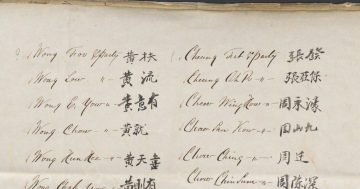
COVID-19 has changed how we work, travel and marry. The National Library is documenting it. Photo: Michelle Kroll.
COVID-19 is, literally, history in the making. Hand sanitiser, video conferencing and travel restrictions have become part of our daily lives, with only memories of beach holidays to comfort us.
We are living our history now, but future generations will want to see what happened to us in 2020 and the National Library of Australia wants to document and preserve it.
To make sure our history is recorded as it’s happening, the National Library is collecting information about life during the coronavirus pandemic and it’s calling on citizen collectors to help it gather COVID-19-related materials.
The National Library’s role is to ensure that documentary resources of national significance relating to Australia and the Australian people are collected, preserved and made accessible. This includes snapshots of web pages, posters, signs, even menus – everything needed to create a complete picture of life during what is certain to be the best-documented pandemic in history.
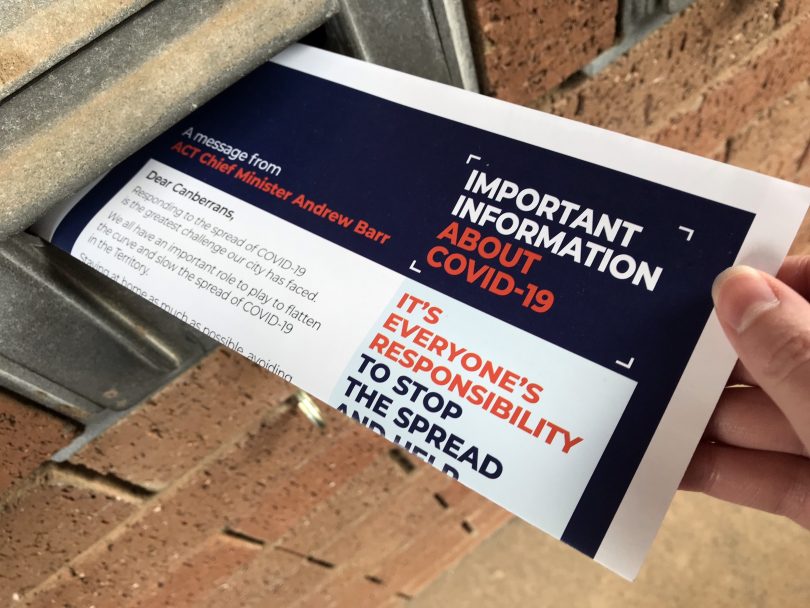
Flyer from the ACT Government to educating the public about COVID-19. Photo: Supplied.
National Library of Australia Director of Australian Collections Management Libby Cass says COVID-19 is now a part of our national story and collecting COVID-19 life in a range of formats is essential, not just hard copy material for which the National Library is best known.
The National Library began collecting online material 20 years ago and their small team of web archivists began collecting pandemic content almost immediately.
“We started the digital collection with captures of webpages of changing government travel advisory notices and other critical government information as well as archiving news sites. Information online was changing rapidly and it was important to capture those changes,” Libby said.
With websites changing daily, the National Library has over 700 items archived and available on Trove, the National Library’s online database.
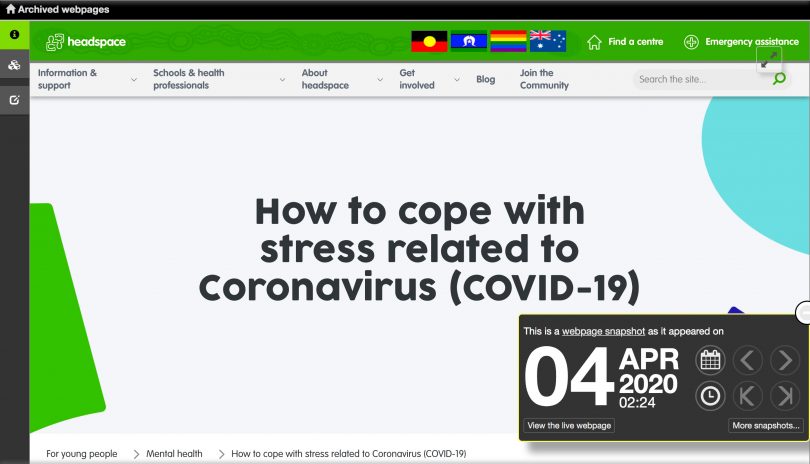
Snapshots such as this from the Headspace webpage are already included in the NLA collection. Image: Supplied.
Libby says the challenges of collecting are significant and key to their ongoing efforts are the contributions of the general public.
“We are inviting the public to start collecting for us. Any material that is a snapshot of the pandemic like posters, signs or stay-at-home notices, for example, will be of interest to us,” Libby said.
“We are interested in collecting a variety of views from different community groups. Content from remote and regional Australia is of particular interest, along with content in languages other than English. We want the collection to be representative of the national experience,” Libby said.
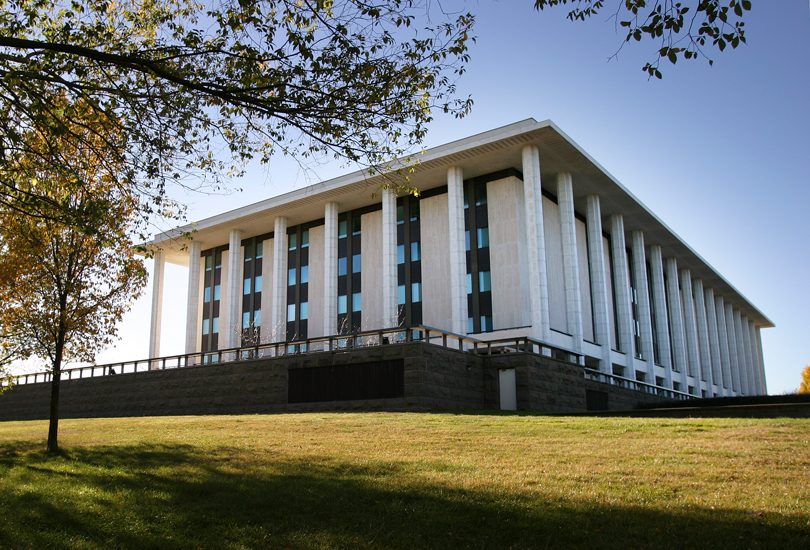
The National Library is now calling on citizen collectors to help gather COVID-19 related materials. Photo: Supplied.
The National Library is not working alone. Institutions around Australia are building their own collections and opening up their archives to contributions from the public about life with Covid-19.
“We are working with the state and territory libraries to make sure we are not duplicating resources and ensuring we are telling a national story. We are also coordinating a small group of photographers to document the impact on Australia,” Libby explained.
Libby says the significance of the COVID-19 collection is apparent from the intense media interest in the NLA’s 1918 Spanish Flu collection.
“At some point in time, there will be requests from future generations wanting to know what life in Australia was like during the time of COVID-19. This collection is for them.”
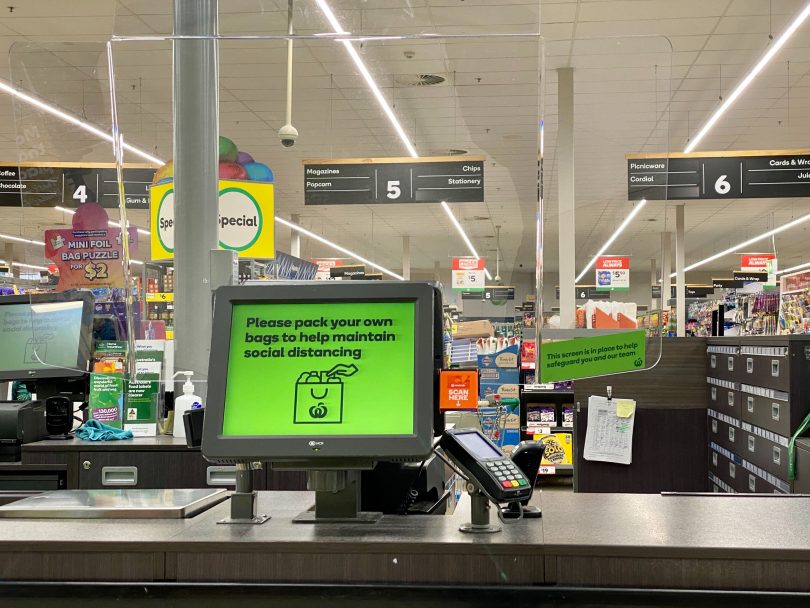
Perspex screens have been installed st supermarkets to enforce social distancing for supermarket workers. Photo: Region Media.
Learn more about COVID-19: Preserving the Stories of Australia.
In addition to what is already being collected digitally, the National Library welcomes submissions of printed items of COVID-19 ephemera, which have appeared in letterboxes and local neighbourhoods in response to the global pandemic. Content from remote and regional Australia is of particular interest, along with content in languages other than English.
Items should be addressed to the Ephemera Officer, c/o the National Library of Australia, Parkes Place, Canberra ACT 2600.
Learn more about the Australian Web Archive and the 20-plus years of Australia’s digital history:
Original Article published by Karyn Starmer on The RiotACT.







